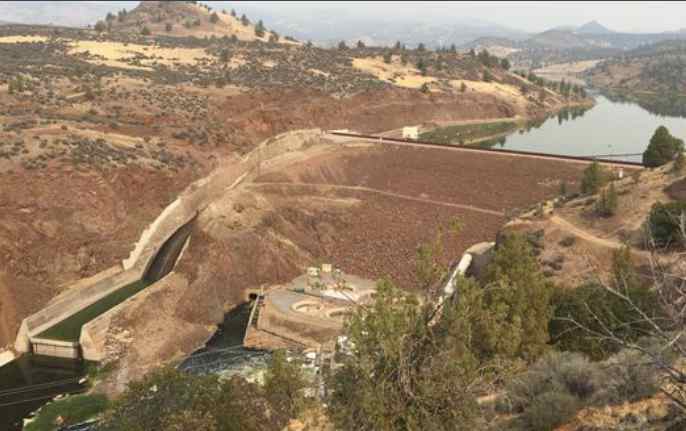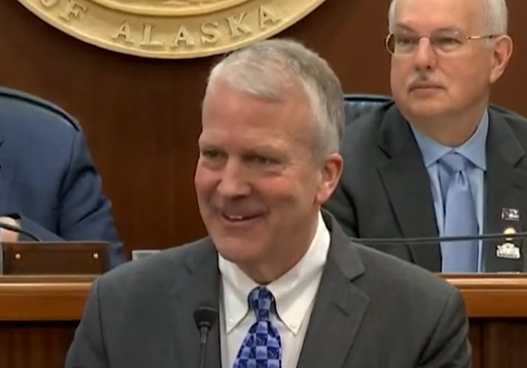Secretary of the Interior Ken Salazar announced yesterday that the decision on the controversial Klamath River dam removal project has been postponed. A new date for a decision has yet to be announced.
The Klamath River Dam Removal was a portion of the agreement that was signed two years ago. The agreement was hammered out in an attempt to end the water disputes that have lasted for over a century in the Klamath Basin.
Secretary Salazar, Under Secretary of Commerce Dr. Jane Lubchenco, Klamath Basin farmers, fishermen, conservation groups, American Indian tribes, the governors of Oregon and California, and the CEO of PacifiCorp – the owner of four hydroelectric dams on the Klamath River – announced the completion of the KBRA and the KHSA. The signing of these documents marked the beginning of a period of analysis of potential dam removal and the need to work with Congress to authorize a Secretarial Determination. At the time of the signing, Secretary Salazar hailed the importance of this comprehensive, locally-driven solution to one of the nation’s most bitter and longest running water disputes.
The agreement, in part, laid out the way that water would be alotted to the farmers, land-owners and fishermen at times when the water is scarce.
PacifiCorp, a major player in the agreement, says that the agreement would mean the dismantling of four of its hyrdo-electric plants. These plants are up for re-licensing. PacifiCorp says the dismantling of the dams is much more cost effective than having the dams re-licensed, because of the large costs that would be incurred putting in fish ladders and screens needed to bring the plants into compliance.
Currently, those four plants, the oldest, built in 1903, provide power to about 70,000 customers. Together with two other plants, those four dams, generate 169 megawatts, only produce about 2% of the corporation’s energy portfolio. According to PacifiCorp officials, the replacement of the power lost to the removal of the dams would easily be replaced. They cite a development of 1,600 megawatts through wind power in the last five years.
Further upstream, Copco Lake, created in 1918 when Copco No. 1 was constructed, would disappear. The river would revert to something similar to its original flow. Many of the landowners in the area have already seen their property values plummet in expectation of the carrying out of the agreement. Some have seen their values fall as much as 50%, and some of the homeowners in the area, wanting to get out of ownership have been unable to find real estate agents willing to sell the land.
Under the terms of the Klamath Hydroelectric Settlement Agreement (KHSA), the Secretary agreed to use “best efforts” to make a decision by March 31, 2012; however, Congressional action is required to pass legislation authorizing the Secretary to make a Secretarial Determination, which will result in either the removal of the dams eight years from now, or require PacifiCorp to continue its application for a new hydropower license for the dams.
The KHSA stipulates that three key conditions must first be met before a Secretarial Determination can be made:
- The Interior Department must conduct additional studies in order to provide a clear and accurate description of the costs, benefits, and liabilities associated with dam removal (expected to be released in final form this spring);
- Oregon and California must identify a source for financing their share of the dam removal costs (Oregon has done so, and it is expected that California will confirm details of its share very soon); and
- Congress must authorize a Secretarial Determination (legislation was introduced last November, but there has been no further action).
An overview report was generated from a peer review of the studies released in September of last year. Secretary Salazar said said of some of the findings of that document, “The reports tell us that removal of the dams has the potential to support thousands of additional jobs in the Klamath Basin, including new fishing and recreational opportunities, while providing increased water delivery certainty to Basin farmers and wildlife refuges and would increase the harvest opportunity for salmon and steelhead in the river,” added Salazar. “We will continue our collaboration with states, tribes and local communities to finalize the scientific studies and environmental analysis, and we will continue to work with Congress on legislation that would authorize a decision to be made.”
Senators and Representatives have taken sides both in California and Oregon on the Dam Removal agreement.
The Senator responsible for introducing legislation for funding to implement the agreement was U.S. Senator Jeff Merkley, D-Ore. He has worked dilligently to find support amongst other lawmakers. Barbara Boxer, D-Calif. co-sponsored the bill with Merkley. She has also been instrumental in finding supporters for the legislation.
U.S. Representative Mike Thompson, D-Calif. has worked in conjunction with Merkley in the House. He introduced legislation there, as well as recruited 16 co-sponsors for the bill.
U.S. Senator Dianne Feinstein, D-Calif. has been non-committal, but according to Boxer and Merkley, who have been in conversations with her, she may support the legislation.
U.S. Representative Wally Berger, R-Calif. has stated to the press as well as in an Op/Ed to California news outlets that if science and cost benefit ratio justify the removal of the dams, they should be removed. He also stated that if not, PacifiCorp should be given the opportunity to re-license the dams.
On the extreme other side of the issue, U.S. Representative Tom McClintock, R-Calif. says he has no opinion of the agreements what-so-ever. But, as committe Chair of the House, Water and Power Subcommittee, he vows to kill the House Bill. He does not support anything that would facilitate the removal of the Klamath River dams.
The removal of the dams could mean millions upon millions for the commercial fishing industry along the coasts of Oregon and California.








